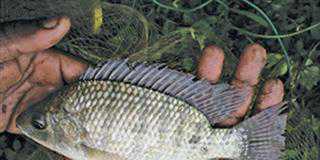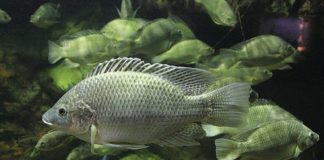
In any re-circulating-type system, the method of water quality control – filtration – is a key aspect. Poor water quality will make any system, no matter how good, with even the best performing species, uneconomic and unviable.
Tilapia in South Africa require elevated water temperature, and must be grown at high densities in tunnel-based systems. Stocking rates of up to 30kg/m3 of water means that at near-harvest mass (400g to 500g) the demands on filtration are very high. Ammonia levels have to be kept low and oxygen saturation high, preferably over 6mg/l, to avoid stress and to sustain maximum growth.
There are four stages of filtration which are non-negotiables:
- sedimentation;
- mechanical filtration;
- biological filtration;
- nitrate dilution.
It is in designing these stages that shortcomings arise for commercial-scale systems.
SEDIMENTATION
In terms of sedimentation and sediment removal, the options are drum separaters or settling tanks. The former are efficient when new, but expensive, and require regular servicing and replacement of moving parts. A great deal can go wrong, and when this happens an entire system is at risk.
High-volume settling tanks may be marginally less efficient , but cannot fail under load, which is when they are really essential.
MECHANICAL FILTRATION
Mechanical filtration removes the neutrally buoyant particles that do not settle out. The choice of medium used is a matter of considerable debate.
Gravel, netting and beads are all options. Sand is not recommended due to rapid blocking, and closed swimming pool-type sand filters are completely inappropriate in a commercial setting. In a large volume filter, half bricks are a cheap and efficient option as the debris sticks to the bricks and breaks down biologically.
All the commercially available laminated plastic ’honey-combs’ are so over-priced as to not be practical: at approximately R4 000/ m3, a 14m3 filter would cost R56 000!
BIOLOGICAL FILTRATION
Regarding biological filtration, too many farmers are seduced into buying off-the-shelf filters designed for low-load koi ponds. Under the high-flow conditions of commercial production, these units are invariably too small, and transit time within them too short for efficient ammonia/ nitrite breakdown.
There is no alternative to custom-made high-volume bio-filters with a retention time of at least 20 minutes. Choice of medium is again up for debate. Trickle filters are powerful, yet rely on continuous flow. Just 20 minutes of no-flow kills all the bacteria that breaks down the ammonia, and recovery takes weeks.
NITRATE REMOVAL
Removal of filtration’s final product, nitrate, is problematic. Dilution, the obvious answer, cools a system that needs to be run at 28°C. Removal by plants is a possibility here. Nitrate is not particularly toxic to fish at low concentrations, but promotes unicellular algae growth, resulting in green water. Tilapia love algae, as they can effectively filter feed from it. However, the algae also competes for the available oxygen, possibly cancelling out any feed benefits.













